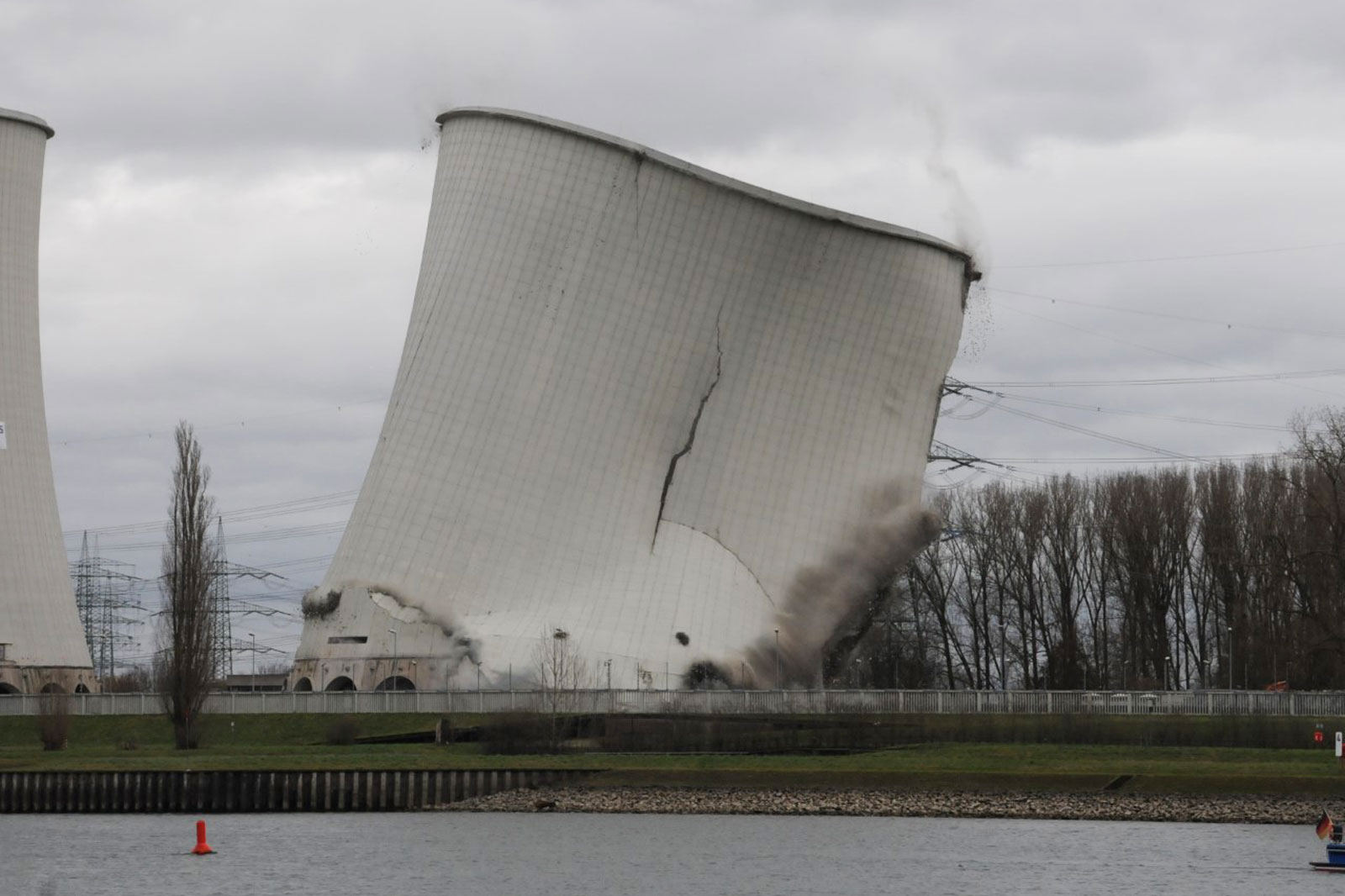 The first of four cooling towers has been demolished at Germany’s Biblis. The two-unit Biblis plant (A&B), each with two cooling towers, was shut down in March 2011 in response to the Fukushima Daiichi accident.
The first of four cooling towers has been demolished at Germany’s Biblis. The two-unit Biblis plant (A&B), each with two cooling towers, was shut down in March 2011 in response to the Fukushima Daiichi accident.
The 80-metre-high tower was brought down after specialists weakened the structure by making slots in the concrete shell and removing supports to enable a controlled collapse. The controlled collapse of unit A's second cooling tower is currently planned for the second half of February, and the two towers of unit B in 2024.
"The successful demolition of the first cooling tower is another milestone at the Biblis site," said Nikolaus Valerius, Management Board member responsible for the nuclear energy division at plant owner RWE Power. "This makes the continuous progress of the dismantling of the plant, which has been going on since the summer of 2017, also visible to the outside."
RWE said approximately 15,000 tonnes of conventional construction waste will be produced for each tower. The waste from unit A will be processed after the demolition of the second cooling tower. RWE added that the quality of the concrete means most of the material can be recycled as a substitute for gravel in concrete production or as an aggregate in the cement industry.
The two Biblis reactors were among the eight units Germany ordered to be closed after Fukushima. Biblis A&B are pressurised water reactors rated at 1,167 MWe and 1,240 MWe, respectively. They had been licensed to operate until 2019 and 2021 just two months before the shutdown order.
RWE in 2012 to the Hesse's Ministry of the Environment, Climate Protection, Agriculture & Consumer Protection to decommission and dismantle the two reactors. The application detailed the proposed approach, the extent of dismantling, the procedures to be followed and the precautions to ensure radiation protection. A detailed safety report was prepared and an environmental impact assessment carried out. Approval was granted in 2017. The operation to dismantle the two reactors is expected to take about 15 years.



